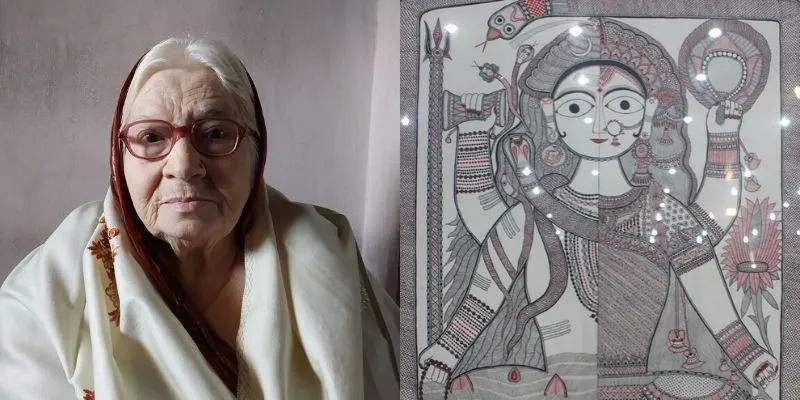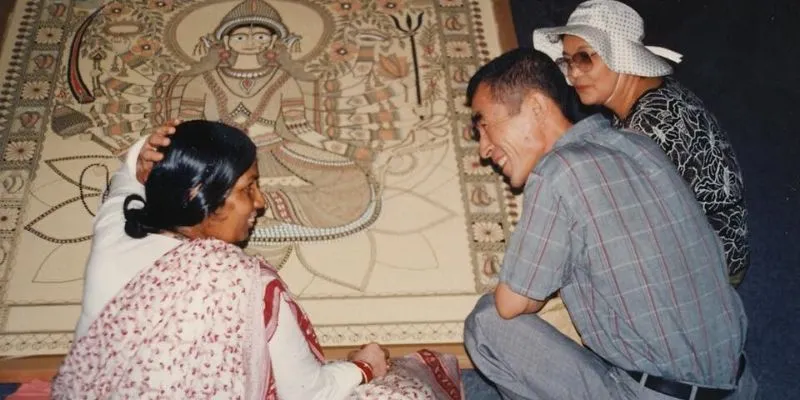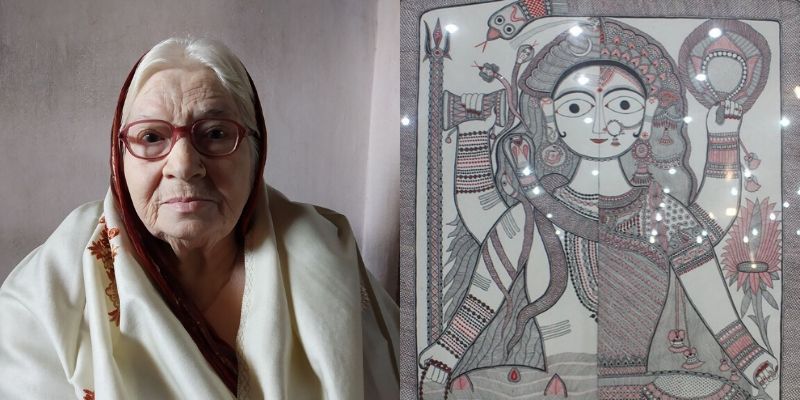At 93, Padma Shri awardee Godawari Dutta is preserving an ancient art by training over 50,000 people
Hailing from a small village in the Darbhanga district in Bihar, Godawari Dutta learned Mithila art from her mother. She has now taught over 50,000 people, and enabled women to be financially independent
Godawari Dutta, a 93-year-old Madhubani artist from Darbhanga district’s Bahadurpur village, is a woman of many accolades. In 2019, she won the prestigious Padma Shri award, the country’s fourth-highest civilian award, for her exemplary contribution to Mithila Art.
“Mithila art is a traditional form. One acquires this art from ancestors. Usually, mothers pass on the tradition to their daughters so that in future they can paint if they need to,” Godawari told The Telegraph.

Godawari Dutta along with one of her art work (Image: The Better India)
Her mother and guru Subhadra Devi, a well-versed carrier of Mithila traditions and a skilled artist, encouraged a young Godawari to take up the art.
Godawari, who was also conferred with the title ‘Shilp Guru’ by President Pratibha Patil in 2006, began to share her skills in the 1980s. For the last 35 years, she has visited many educational institutions in India and abroad, and has taught the art form to close to 50,000 individuals, including students, teachers, and artists, The Better India reports.
Moreover, she has also enabled rural women of the Mithila village in Bihar to becoming financially independent by providing them with opportunities to sell their art. Besides, she has also been instrumental in forming a village committee in Mithila to encourage Girl Child Education.
Saving the dying art
Godawari has been doing her bit to popularise the dying art form internationally by setting up a museum for the art.
“An artist from Japan used to take collections of Mithila paintings from us. He would take the paintings and organise exhibitions there. Impressed with the work, senior government officers in India asked him to take us to Japan where we could work on Mithila paintings.” Godawari said. The curation and creation of the Mithila Museum took seven-years-long.

Image: The Better India
The Mithila art form is known for the depiction of stories from The Ramayana, The Mahabharata, events, nature, and even just mundane activities. Godawari would particularly use bamboo sticks to paint, aided by natural dyes to invoke colours in her art. In her effort to keep the dying art form alive, she counts on the younger generation of artists.
“Lots of things have to be done to keep the tradition alive, and I want to remain healthy to do so. Mithila art is unique and the coming generation should also think about keeping it alive,” she added.
(Edited by Suman Singh)










![[Startup Bharat] Y Combinator-backed BeWell Digital is enabling the digital transformation of radiologists](https://images.yourstory.com/cs/2/40d66ae0f37111eb854989d40ab39087/ImagesFrames31-1648033042143.png)


